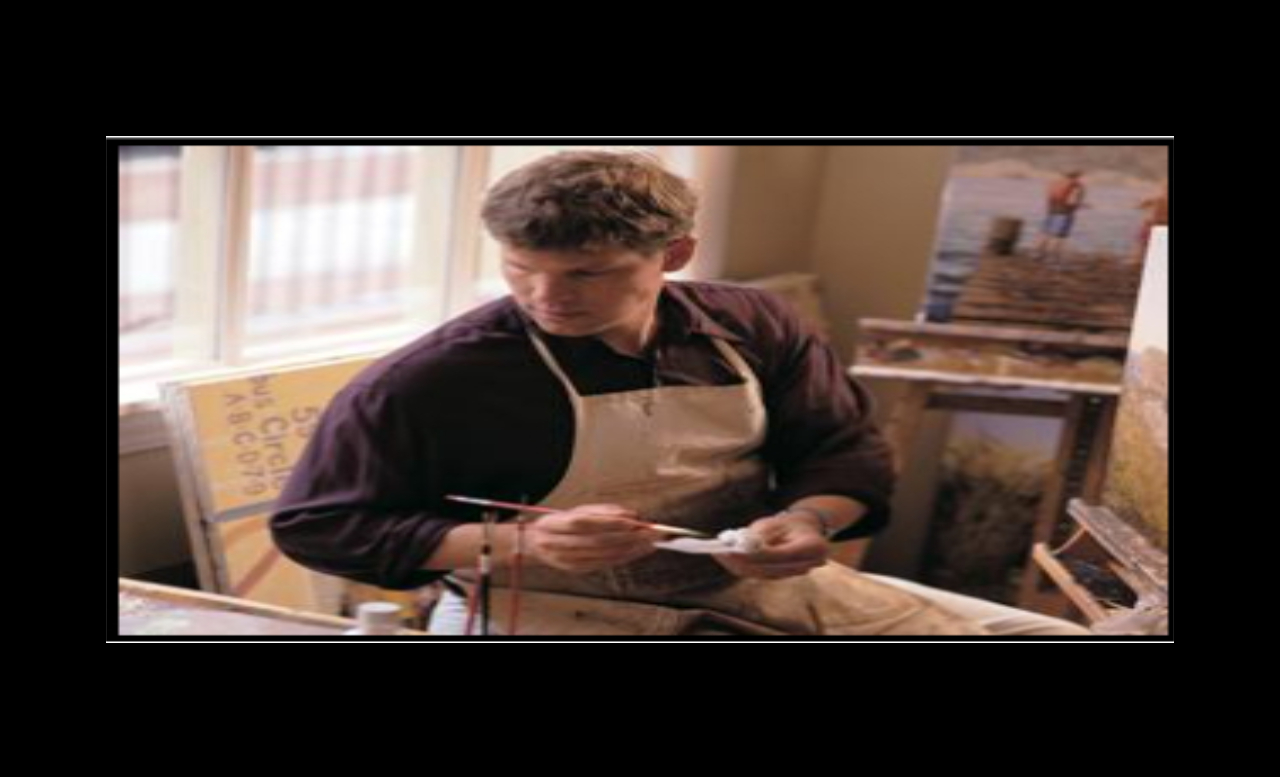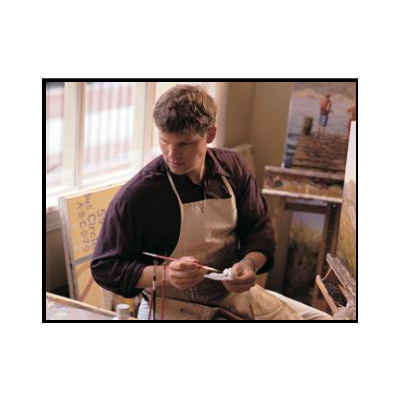
Karl Soderlund
A visitor to Karl Soderlund’s studio is likely to be awestruck by his over seven-foot-high oil paintings of Marilyn Monroe, Muhammad Ali, Audrey Hepburn and Albert Einstein, among others.
To Blogs
A visitor to Karl Soderlund’s studio is likely to be awestruck by his over seven-foot-high oil paintings of Marilyn Monroe, Muhammad Ali, Audrey Hepburn and Albert Einstein, among others.
To Blogs
A visitor to Karl Soderlund’s studio is likely to be awestruck by his over seven-foot-high oil paintings of Marilyn Monroe, Muhammad Ali, Audrey Hepburn and Albert Einstein, among others. In 2010, these paintings formed the basis for his exhibition at the National Arts Club in New York City, entitled Iconic Obsessions. The title points to the habit of elevating famous people to superhuman status. They become gods in our minds; however, they are also commodities, in that reproductions of... Read More
people are as venerated as any religious icon. Perhaps it is our obsession with the lives of such icons, so often reflected in the vanity magazines and celebrity television shows, that Soderlund is masterfully revealing through his oil paintings. In this series, he has developed a signature style in embedding within and around the contours of his figures objects from the personal histories of his subjects. It is the clever depictions of the subjects’ personal histories that enrich Soderlund’s portraits. The process of creating these Iconic Obsessions paintings begins by rendering his subject in oil on a large canvas. Each painting in this series measures 67” wide by 87” high. Once the initial painting is done to his satisfaction, Soderlund goes back into it to apply throughout symbols that he has found via intensive research on his subjects. In considering Soderlund’s work, one immediately thinks of Andy Warhol and Chuck Close, who have painted contemporary icons as well. In the 1960s, Andy Warhol developed the idea of icons as commodities by mass producing them not only in painted form but in editioned prints. Warhol’s subjects include Marilyn Monroe and Jacqueline Kennedy Onassis, among others. Often, he created images in groups of nine along a grid pattern that replicates the same image again and again. For Soderlund, however, the portrait is a point of departure. He enjoys going beyond it to include references to personal history that is ultimately revealed in the painting. His paintings become visual biographies of the triumphs and hardships of their subjects. For instance, Muhammad Ali’s portrait includes the Olympic gold medal that he angrily threw into the Ohio River after an encounter with white racists, and butterflies and bees reflecting Ali’s famous comment, “Float like a butterfly, sting like a bee.” Soderlund enjoys watching viewers identify the symbols through out his paintings, and considers it a personal triumph to have successfully combined the elements into a holistic visual experience. Marilyn Monroe is represented by her familiar iconic stance over a subway grate with her white dress swirling up around her and champagne glasses nestled throughout. Audrey Hepburn has intricate images of children articulating her form; a tondo of a woman holding a child refers to her work as UNICEF’s spokesperson. For Paul Newman there are racecars and racing helmets, as well as images of Butch Cassidy and the Sundance Kid, and his treasured performing awards. Soderlund’s paintings without the symbols are themselves beautifully rendered portraits. In Soderlund’s typical style, there is a portrait of his wife Amanda that is treated as one of his Iconic Obsession figures. In one of these paintings, he has created a portrait that embeds the eye and pyramid found on the back of the American dollar. Another portrait of Amanda is a close-up restricted to her nose and chin rendered in brush strokes and colors, making them as lush and vibrant as ripe fruit. The exquisite crimson of her lips and the rosy tones of her cheeks show warmth and vitality. Karl is well-known not only for his portraits, but also his seascapes and landscapes. His work hangs in over 250 public and private collections, including Interpublic Companies, Merrill-Lynch, Pepsi-Co and the Heisman Trophy portrait collection. In 2002, a portrait of his led the introduction of the Heisman Trophy Awards on national television, displaying that year’s winner. Whatever his subject, Karl Soderlund is obsessed by portraiture. His signature style of embedding associated images throughout the canvas continues his subjects’ personal stories. Perhaps they would be complete as portraits themselves. For Soderland, however, that is just the beginning. His Iconic Obsessions resonate as masterfully painted portraits. As Soderlund states, these icons “withstand the test of time.” Laura Einstein, Venu Magazine But the story behind how Karl became the artist he is today is as multi-textured and colorful as his art. Even as a child, Karl had an innate sense of color and composition. He began painting at an early age, inspired by everyday images that made growing up in New York and Connecticut memorable to him. Later, he put aside his paintbrush to attend Denison University, where he majored in Economics. Confident that he had chosen the “safer” career path, he settled into a corporate job in San Francisco. Painting was merely a hobby and a means to fill his blank apartment walls with art that he otherwise could not afford. It wasn’t until his company transferred him to New York City that his eyes were opened once again to his artistic potential. Surrounded by a community rich in art, Karl could not resist. Soon after arriving in New York, he left the corporate world to focus solely on his true calling. Today, Karl has gained both the experience and respect of the art community. He furthered his education at the Art Students League in New York City, Yale University and the Silvermine Guild in Connecticut. And he has studied with renowned realist painter, Daniel E. Greene. Karl also teaches at the Rowayton Arts Center in Norwalk CT
Read Less